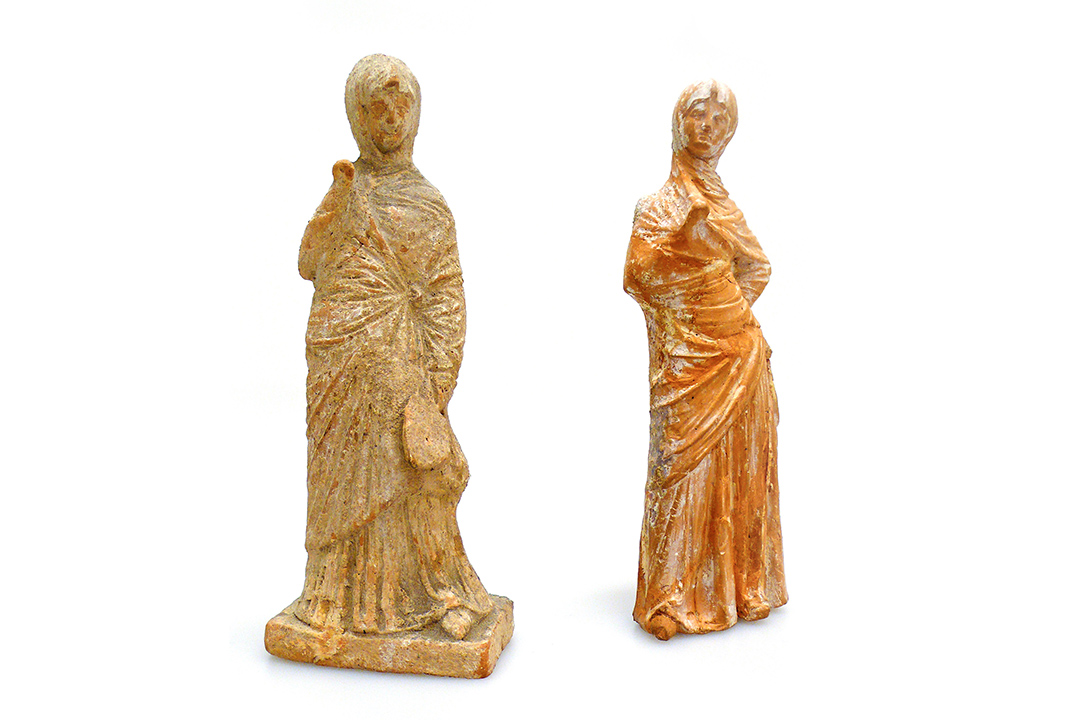
USask Diefenbaker Centre exhibit explores history of forging
For centuries, people have been hoodwinked by clever counterfeiters.
By Helanna GessnerThe ancient Romans knew how to enhance gemstones by soaking them in honey, while Victorian artists figured out how to create fake antiquities to fool the untrained eye. While mass-produced, low-quality fakes find their way into people’s homes, high-quality fakes have also been found in museums around the world. Counterfeiting consumer goods is the world’s fastest-growing crime. In Canada alone, the cost of counterfeiting is estimated at $22 billion annually.
On display at the Diefenbaker Canada Centre on the University of Saskatchewan campus until October 18, Fakes and Forgeries: Yesterday and Today, takes visitors on an exploration of the history of forging and its impact on society. On loan from the Royal Ontario Museum, the exhibit brings awareness of all the ways people can be taken advantage of through the forging and selling of antiques, modern knock-offs, and counterfeit currency.
The exhibit consists of seven cases that feature items from the Royal Ontario Museum’s natural history and world culture collections; two cases displaying modern knock-offs; a sponsored case on counterfeit computer software from Microsoft Canada; and a case provided by the Bank of Canada displaying real and counterfeit Canadian currency.
In the display case Mysteries and Mexico, visitors are presented with four pre-Columbian Zapotec urns—two real artifacts and two crafted by skilled forgers using ancient techniques and high-quality materials. The well-crafted forgeries require the use of a scientific process, called thermos-luminescence, to measure a time range in which they were fired in a kiln.
Modern products, such as Team Canada jerseys or Chanel handbags, surge in popularity throughout the years. Forgers take advantage of this demand by making inexpensive and inferior counterfeit products to bring in a substantial profit. The Really Good Deal and Counterfeits Equal Theft display cases exemplify that buying and selling knock-offs is not a victimless crime.
Fraudulent companies will use cheaper materials at the expense of the consumer and often pay adults and children in developing countries to produce the counterfeit items. Through either the accidental or intentional purchase of knock-off goods, consumers support the unethical practices of these companies.
In response to the growth of counterfeiting, the RCMP and Canadian Standards Association sought to create tips on how to protect consumers from fraudulent products. Their advice: if a product has a price that is too good to be true, it probably is; always buy brand-name items from a reputable retailer that has clearly defined return or exchange policies; look at the quality of packaging; and always be cautious when buying online.
Can you tell the true object from the fake? Visit 101 Diefenbaker Place to guess which artifacts and objects are real and which are fake, and learn how to protect yourself from purchasing forgeries.
(Answer: The figurine on the left is a replica of the authentic Greek statue on the right).

